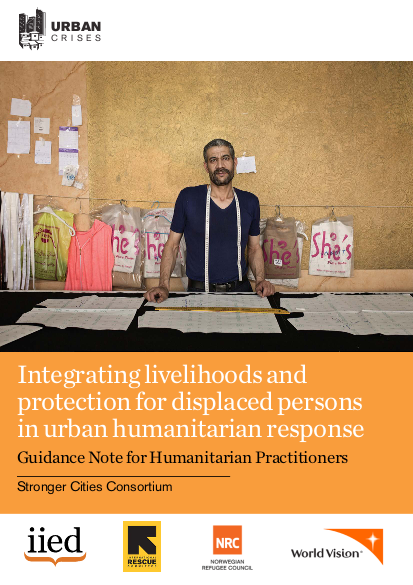Guidance Note for Humanitarian Practitioners

Urban areas are now home to over half the global population as well as two thirds of the world’s refugees and internally displaced people (IDPs). Increasingly, cities and peri-urban areas have become the forefront of humanitarian response, diverting from the traditional paradigm of relief provision in rural and camp settings. The protracted refugee crisis in Syria has highlighted unique challenges and opportunities facing humanitarian efforts in complex urban environments, suggesting a need for greater innovation to respond effectively to the evolving economic and protection challenges faced by displaced persons. Economic insecurity, discrimination, and marginalisation increase the protection risk for the displaced as they seek income-generating opportunities, creating a need for a more integrated approach to livelihoods initiatives. This guidance note provides ten core principles that practitioners can follow when aiming to integrate livelihoods and protection programming in urban humanitarian response, with a focus on supporting economic outcomes for beneficiaries. Key actions in programme design, illustrative performance indicators, notes on sustainability, and brief case examples are included. While the note is derived from experiences serving Syrian refugees in Lebanon and Jordan, its principles were chosen from a global desk review of relief efforts in urban humanitarian settings to provide informed guidance that has universal applicability.
Links
Resource collections
- UN Habitat - Urban Response Collection
- Urban Response - Urban Crisis Preparedness and Risk Reduction
- Urban Response Collection - Community Engagement and Social Cohesion
- Urban Response Collection - Economic Recovery
- Urban Response Collection - Environment and Climate Change
- Urban Response Collection - Housing, Land and Property
- Urban Response Collection - Urban Crisis Response, Recovery and Reconstruction
- Urban Response Collection - Urban Resilience